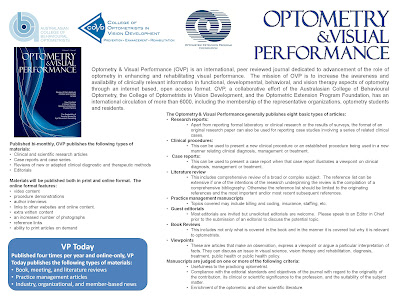MainosMemos contains the latest research and information about eye and vision care of children, developmental disabilities, Traumatic/Acquired Brain Injury and other topics of interest to me (and hopefully you!).
Saturday, October 20, 2012
OVP Online Extras!
Published bi-monthly, Optometry & Visual Performance publishes the following types of materials with the online version offering many extras:
Clinical and scientific research articles
•
Case reports and case series
•
Reviews of new or adapted clinical diagnostic and therapeutic methods
•
Editorials Materials will be published both in print and online format. The online format features:
•
video content
•
procedure demonstrations
•
author interviews
•
links to other websites and online content.
•
extra written content
•
an increased number of photographs
•
reference links
•
ability to print articles on demand
Clinical and scientific research articles
•
Case reports and case series
•
Reviews of new or adapted clinical diagnostic and therapeutic methods
•
Editorials Materials will be published both in print and online format. The online format features:
•
video content
•
procedure demonstrations
•
author interviews
•
links to other websites and online content.
•
extra written content
•
an increased number of photographs
•
reference links
•
ability to print articles on demand
Founding Co-editors, Optometry & Visual Performance
Drs. Dominick Maino and Marc Taub, founding co-editors of Optometry & Visual Performance, are ready for the challenges of starting a new international journal of optometry.
This new journal will be dedicated to diagnosing and improving eye and vision problems that interfere with an individual's quality of life. Disorders such as convergence insufficiency, esotropia, and amblyopia all detract from how we work and play. Those with various disabilities from Down Syndrome to Traumatic Brain Injury.... all have serious eye and vision problems that detract from their quality of life as well.
This journal will not only present information on habilitation and rehabilitation of vision problems affecting performance, but will also address enhancement of performance through various topics such as sports vision.
Interested? We hope so. Please contact the College of Optometrists in Vision Development or the Optometric Extension Program Foundation for additional information. DM
This new journal will be dedicated to diagnosing and improving eye and vision problems that interfere with an individual's quality of life. Disorders such as convergence insufficiency, esotropia, and amblyopia all detract from how we work and play. Those with various disabilities from Down Syndrome to Traumatic Brain Injury.... all have serious eye and vision problems that detract from their quality of life as well.
This journal will not only present information on habilitation and rehabilitation of vision problems affecting performance, but will also address enhancement of performance through various topics such as sports vision.
Interested? We hope so. Please contact the College of Optometrists in Vision Development or the Optometric Extension Program Foundation for additional information. DM
COVD Board of Directors and Me
The College of Optometrists in Vision Development heard my last official report at our annual meeting in Texas as editor of Optometry & Visual Development. I have enjoyed working with this fine group of individuals over the past 8 years.
As the new founding co-editor of our new journal, Optometry & Visual Performance, I want to thank (1st row L to R) Drs. Ida Chung, David Damari and Ms. Pamela Happ (second row) Drs. Brad Haberhmel, Barry Tannen, Christine Allison, Kara Heying, (me), Robin Price, Jennifer Dattolo, and Pat Pirotte. These are the men and women that have helped make COVD great!! Thanks to all!! DM
As the new founding co-editor of our new journal, Optometry & Visual Performance, I want to thank (1st row L to R) Drs. Ida Chung, David Damari and Ms. Pamela Happ (second row) Drs. Brad Haberhmel, Barry Tannen, Christine Allison, Kara Heying, (me), Robin Price, Jennifer Dattolo, and Pat Pirotte. These are the men and women that have helped make COVD great!! Thanks to all!! DM
Friday, October 19, 2012
Optometry & Visual Performance: Call for Papers
The Optometry & Visual Performance generally publishes eight basic types of articles:
•
Research reports:
•
Apart from reporting formal laboratory or clinical research or the results of surveys, the format of an original research paper can also be used for reporting case studies involving a series of related clinical cases.
•
Clinical procedures:
•
This can be used to present a new clinical procedure or an established procedure being used in a new manner relating clinical diagnosis, management or treatment.
•
Case reports:
•
This can be used to present a case report when that case report illustrates a viewpoint on clinical diagnosis, management or treatment.
•
Literature review
•
This includes comprehensive review of a broad or complex subject. The reference list can be extensive if one of the intentions of the research underpinning the review is the compilation of a comprehensive bibliography. Otherwise the reference list should be limited to the originating references and the most important and/or most recent subsequent references.
•
Practice management manuscripts
•
Topics covered may include billing and coding, insurance, staffing, etc.
•
Guest editorials
•
Most editorials are invited but unsolicited editorials are welcome. Please speak to an Editor in Chief prior to the submission of an editorial to discuss the potential topic.
•
Book Reviews
•
This includes not only what is covered in the book and in the manner it is covered but why it is relevant to optometrists.
•
Viewpoints
•
These are articles that make an observation, express a viewpoint or argue a particular interpretation of facts. They can discuss an issue in visual science, vision therapy and rehabilitation, diagnosis, treatment, public health or public health policy. Manuscripts are judged on one or more of the following criteria:
•
Usefulness to the practicing optometrist.
•
Compliance with the editorial standards and objectives of the journal with regard to the originality of the contribution, its clinical or scientific significance to the profession, and the suitability of the subject matter.
•
Enrichment of the optometric and other scientific literature.
•
Research reports:
•
Apart from reporting formal laboratory or clinical research or the results of surveys, the format of an original research paper can also be used for reporting case studies involving a series of related clinical cases.
•
Clinical procedures:
•
This can be used to present a new clinical procedure or an established procedure being used in a new manner relating clinical diagnosis, management or treatment.
•
Case reports:
•
This can be used to present a case report when that case report illustrates a viewpoint on clinical diagnosis, management or treatment.
•
Literature review
•
This includes comprehensive review of a broad or complex subject. The reference list can be extensive if one of the intentions of the research underpinning the review is the compilation of a comprehensive bibliography. Otherwise the reference list should be limited to the originating references and the most important and/or most recent subsequent references.
•
Practice management manuscripts
•
Topics covered may include billing and coding, insurance, staffing, etc.
•
Guest editorials
•
Most editorials are invited but unsolicited editorials are welcome. Please speak to an Editor in Chief prior to the submission of an editorial to discuss the potential topic.
•
Book Reviews
•
This includes not only what is covered in the book and in the manner it is covered but why it is relevant to optometrists.
•
Viewpoints
•
These are articles that make an observation, express a viewpoint or argue a particular interpretation of facts. They can discuss an issue in visual science, vision therapy and rehabilitation, diagnosis, treatment, public health or public health policy. Manuscripts are judged on one or more of the following criteria:
•
Usefulness to the practicing optometrist.
•
Compliance with the editorial standards and objectives of the journal with regard to the originality of the contribution, its clinical or scientific significance to the profession, and the suitability of the subject matter.
•
Enrichment of the optometric and other scientific literature.
Optometry & Visual Performance
Founding Co-editors, Drs. Dominick Maino and Marc Taub will be working with managing editor, Ms. Kelin Kushin to produce this new optometric journal.
Optometry & Visual Performance (OVP) is an international, peer reviewed journal dedicated to advancement of the role of optometry in enhancing and rehabilitating visual performance. The mission of OVP is to increase the awareness and availability of clinically relevant information in functional, developmental, behavioral, and vision therapy aspects of optometry through an internet based, open access format. OVP, a collaborative effort of the Australasian College of Behavioural Optometry, the College of Optometrists in Vision Development, and the Optometric Extension Program Foundation, has an international circulation of more than 6000, including the membership of the representative organizations, optometry students and residents.
Optometry & Visual Performance (OVP) is an international, peer reviewed journal dedicated to advancement of the role of optometry in enhancing and rehabilitating visual performance. The mission of OVP is to increase the awareness and availability of clinically relevant information in functional, developmental, behavioral, and vision therapy aspects of optometry through an internet based, open access format. OVP, a collaborative effort of the Australasian College of Behavioural Optometry, the College of Optometrists in Vision Development, and the Optometric Extension Program Foundation, has an international circulation of more than 6000, including the membership of the representative organizations, optometry students and residents.
Thursday, October 18, 2012
Optometry & Visual Performance
Optometry & Visual Performance (OVP) is an international, peer reviewed journal dedicated to advancement of the role of optometry in enhancing and rehabilitating visual performance. The mission of OVP is to increase the awareness and availability of clinically relevant information in functional, developmental, behavioral, and vision therapy aspects of optometry through an internet based, open access format. OVP, a collaborative effort of the Australasian College of Behavioural Optometry, the College of Optometrists in Vision Development, and the Optometric Extension Program Foundation, has an international circulation of more than 6000, including the membership of the representative organizations, optometry students and residents.
Wednesday, October 17, 2012
New Journal: Optometry & Visual Performance
The Australasian College of Behavioural Optometry, College of Optometrists in Vision Development, and the Optometric Extension Program Foundation have joined forces to produce a new journal: Optometry & Visual Performance.
Tuesday, October 16, 2012
Neuroscientists interested ini treating adults with amblyoia
Presentation Title: A new binocular treatment of lazy eye (amblyopia)
Authors: *B. MANSOURI1, B. SCHMIDT1, P. SING1, P. PEARSON2, A. GLOBA2;
1Univ. Manitoba, Winnipeg, MB, Canada; 2Psychology, Univ. of Winnipeg, Winnipeg, MB, Canada
Abstract:
Objectives: Amblyopia is the most common cause of impaired vision in one eye. Although patching the fellow eye has been shown to be effective in treating children, there has been no clinically approved treatment available for amblyopic adults. The current study reports the result of a clinical trial of a new treatment that is based upon recent demonstrations of neuroplasticity in adults with amblyopia.
Methods: Sixteen adults (mean 37±18 years) with mild, moderate and severe amblyopia (visual acuity (VA) of 20/40-50, 20/63-100 and 20/120 or less, respectively) and two control participants (VA 20/20) completed 18 sessions of visual binocular training. Training involved random dot kinematograms presented dichoptically for 500ms using stereo-goggles, where target dots moved to the left and right of the screen and noise dots moved in random direction. The participants’ task was to identify the direction of motion of the targets. First, binocular motion discrimination threshold was measured as signal to noise ratio for each patient (i.e. binocular threshold). Then, using the previously obtained signal/noise ratio, targets were presented to the amblyopic eye with high contrast whereas noise was presented to the fellow eye with relatively lower contrast. The difference in contrast of the stimuli presented to the two eyes was uniquely determined for each patient based upon the contrast of noise dots that permitted binocular combination of the information from the two eyes (balance-point). We frequently measured the binocular threshold and VA for each patient across the training sessions and adjusted the signal/noise ratio according to patients’ improvement in binocular motion discrimination. We used student one-sample T-Test and correlation coefficient to analyze the data.
Conclusion: Our results demonstrated that binocular treatment of amblyopia improved VA on average by 4 lines
Comments: I'm thrilled that neuroscientists can now feel confident that amblyopia can be treated in adults....especially since for decades they said if you were older than 6 it was impossible! I'm not quite sure what they mean by " no clinically approved treatment available for amblyopic adults"...adults have been treated for amblyopia by functional optometrists for many years....using clinically approved techniques....meaning that they worked! I would strongly suggest that our neuro-scientist colleagues check out the optometric literature on this topic. Look for articles by Nate Flax, Bill Ludlam, and many others. (Go beyond PubMed) DM
Authors: *B. MANSOURI1, B. SCHMIDT1, P. SING1, P. PEARSON2, A. GLOBA2;
1Univ. Manitoba, Winnipeg, MB, Canada; 2Psychology, Univ. of Winnipeg, Winnipeg, MB, Canada
Abstract:
Objectives: Amblyopia is the most common cause of impaired vision in one eye. Although patching the fellow eye has been shown to be effective in treating children, there has been no clinically approved treatment available for amblyopic adults. The current study reports the result of a clinical trial of a new treatment that is based upon recent demonstrations of neuroplasticity in adults with amblyopia.
Methods: Sixteen adults (mean 37±18 years) with mild, moderate and severe amblyopia (visual acuity (VA) of 20/40-50, 20/63-100 and 20/120 or less, respectively) and two control participants (VA 20/20) completed 18 sessions of visual binocular training. Training involved random dot kinematograms presented dichoptically for 500ms using stereo-goggles, where target dots moved to the left and right of the screen and noise dots moved in random direction. The participants’ task was to identify the direction of motion of the targets. First, binocular motion discrimination threshold was measured as signal to noise ratio for each patient (i.e. binocular threshold). Then, using the previously obtained signal/noise ratio, targets were presented to the amblyopic eye with high contrast whereas noise was presented to the fellow eye with relatively lower contrast. The difference in contrast of the stimuli presented to the two eyes was uniquely determined for each patient based upon the contrast of noise dots that permitted binocular combination of the information from the two eyes (balance-point). We frequently measured the binocular threshold and VA for each patient across the training sessions and adjusted the signal/noise ratio according to patients’ improvement in binocular motion discrimination. We used student one-sample T-Test and correlation coefficient to analyze the data.
Conclusion: Our results demonstrated that binocular treatment of amblyopia improved VA on average by 4 lines
Comments: I'm thrilled that neuroscientists can now feel confident that amblyopia can be treated in adults....especially since for decades they said if you were older than 6 it was impossible! I'm not quite sure what they mean by " no clinically approved treatment available for amblyopic adults"...adults have been treated for amblyopia by functional optometrists for many years....using clinically approved techniques....meaning that they worked! I would strongly suggest that our neuro-scientist colleagues check out the optometric literature on this topic. Look for articles by Nate Flax, Bill Ludlam, and many others. (Go beyond PubMed) DM
Monday, October 15, 2012
Sports-related concussion: assessment and management.
Sports-related concussion: assessment and management.
Most major U.S. professional sports and the National Collegiate Athletic Association (NCAA) have adopted concussion policies. Current National Football League and NCAA guidelines do not permit an athlete with a concussion to return to play on the same day as the injury. No adolescent or high-school athletes with a concussion should be allowed to return to play on the same day regardless of severity..... Concussion risk and severity may be affected by age, sex, and genetic predisposition.Athletes with a concussion should rest physically and cognitively until symptoms have resolved at rest and with exertion. .......Retirement from contact or collision sports may be necessary for an athlete who has sustained multiple concussions or has a history of prolonged symptoms after concussions.Long-term effects of concussions are still relatively unknown, ......
Sunday, October 14, 2012
Home-Based Stroke Therapy Improves Outcomes, Eliminates Wait Times, Saves Money
Home-Based Stroke Therapy Improves Outcomes, Eliminates Wait Times, Saves Money
Home delivery of stroke rehabilitation improves care, eliminates waiting lists for treatment and saves hundreds of thousands of dollars annually in hospital costs, according to a quality improvement project presented October 1 at the Canadian Stroke Congress...
Subscribe to:
Posts (Atom)
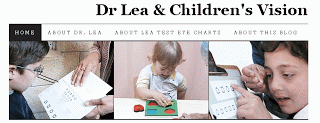
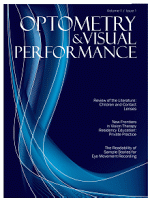
.jpg)
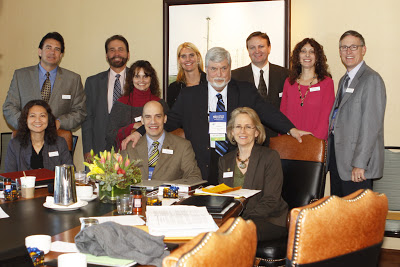
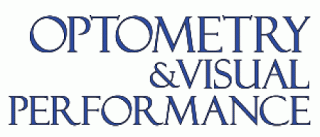
.jpg)

